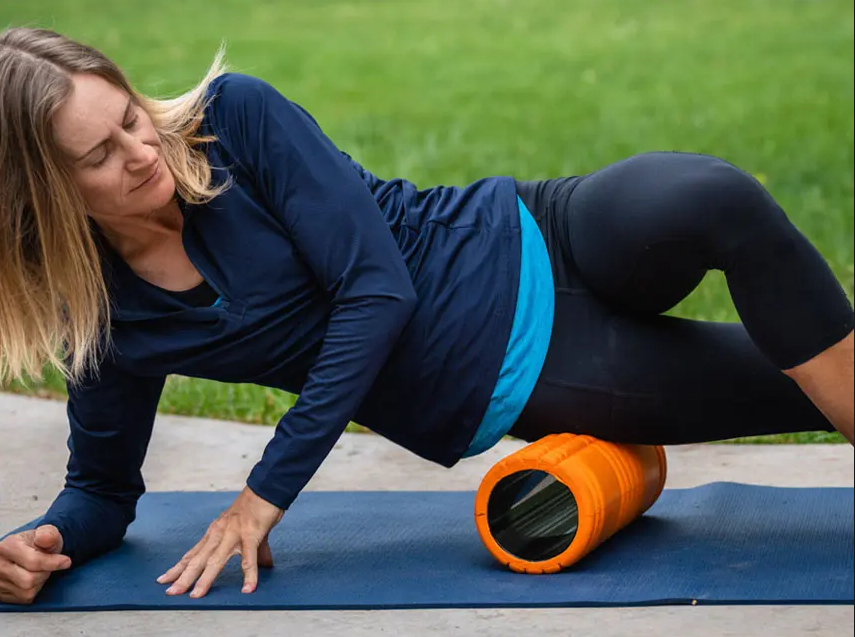Top 10 Recovery Techniques Used by Pro Athletes
Every athlete knows that performance doesn’t just come from training hard—it also comes from recovering smart.

Every athlete knows that performance doesn’t just come from training hard—it also comes from recovering smart. What separates professionals from amateurs is how well they prioritize recovery techniques to enhance performance, prevent injuries, and maintain consistency. This article explores the top 10 recovery techniques used by pro athletes, helping you learn how to optimize your own recovery routine for better results, faster healing, and long-term health.
1. Active Recovery
Active recovery refers to engaging in low-intensity movement after intense workouts. It helps flush out lactic acid, reduces muscle stiffness, and improves circulation without stressing the body.
Benefits of active recovery:
- Reduces delayed onset muscle soreness (DOMS)
- Keeps the body mobile and limber
- Boosts blood flow for nutrient delivery
Examples include:
- Light jogging or walking
- Swimming or cycling at low intensity
- Gentle yoga or mobility drills
Pro Tip: Use active recovery the day after intense competition or strength training for optimal results.
2. Cold Therapy (Ice Baths and Cryotherapy)
Cold therapy is one of the most widely used recovery tools among professional athletes. Ice baths and cryotherapy reduce inflammation, constrict blood vessels, and lower muscle temperature.
Benefits of cold therapy:
- Decreases muscle soreness
- Reduces inflammation and swelling
- Accelerates short-term recovery
Methods used:
- Traditional ice baths (10–15 minutes post-workout)
- Cryotherapy chambers (2–3 minutes at extremely low temperatures)
Caution: Overuse can limit strength gains, so it should be used strategically after intense sessions or during tournaments.
3. Compression Therapy
Compression therapy helps move blood and lymphatic fluid more efficiently through the limbs. Many pro athletes wear compression garments or use pneumatic compression machines.
Benefits of compression therapy:
- Enhances circulation
- Reduces swelling
- Speeds up recovery in legs and arms
Tools used:
- Compression socks or sleeves
- NormaTec or Air Relax compression systems
Use it after training, traveling, or before bed to reduce fluid retention and fatigue.
4. Massage Therapy
Massage therapy is a staple in nearly every pro athlete’s recovery routine. It alleviates muscle tightness, promotes relaxation, and improves flexibility.
Benefits of massage therapy:
- Reduces muscle tension and stress
- Breaks up scar tissue
- Enhances flexibility and range of motion
Types of massage used:
- Sports massage
- Deep tissue massage
- Myofascial release
Pro athletes often schedule regular massage sessions 1–2 times per week.
5. Foam Rolling (Self-Myofascial Release)
Foam rolling is a self-directed recovery method that targets muscle knots and fascia. It’s affordable, accessible, and highly effective when used consistently.
Benefits of foam rolling:
- Reduces soreness and tightness
- Improves blood flow
- Breaks down adhesions and scar tissue
Target areas:
- IT band
- Quads and hamstrings
- Calves and upper back
Use foam rolling during warm-up or cool-down to prepare and recover muscles.
6. Sleep Optimization
Sleep is the most powerful and underrated recovery method for athletes. Quality sleep allows the body to repair tissues, restore hormonal balance, and replenish energy.
Benefits of proper sleep:
- Muscle growth and repair
- Mental clarity and reaction time
- Immune function and injury prevention
Pro athletes aim for:
- 8–10 hours of sleep per night
- Naps of 20–30 minutes post-training
- Sleep environments free of light and noise
Sleep tracking devices and apps help ensure adequate rest and recovery.
7. Nutrition and Hydration
What you consume post-training plays a huge role in recovery. Nutrient timing is crucial for muscle repair, glycogen replenishment, and cellular recovery.
Key recovery nutrition strategies:
- Consume protein and carbs within 30–60 minutes after exercise
- Prioritize anti-inflammatory foods like berries, leafy greens, and fatty fish
- Stay hydrated with electrolytes to maintain cellular balance
Supplements used by athletes:
- Whey protein
- BCAAs
- Omega-3 fatty acids
- Magnesium and zinc for muscle repair
Recovery starts in the kitchen, not just the gym.
8. Mobility and Stretching
Stretching and mobility work help prevent tightness and imbalances that lead to injury. They are key for maintaining flexibility, posture, and healthy joint function.
Benefits of stretching for recovery:
- Reduces muscle tension
- Enhances range of motion
- Supports faster recovery between sessions
Mobility tools used:
- Resistance bands
- Lacrosse balls
- Stretching straps
Common stretches:
- Hip flexors
- Hamstrings
- Shoulders and thoracic spine
Pro athletes often dedicate 15–30 minutes daily to mobility routines.
9. Breathing and Meditation
Mental recovery is just as important as physical recovery. Pro athletes incorporate breathing exercises and meditation to regulate stress, improve focus, and enhance sleep.
Benefits of meditation and breathing:
- Reduces cortisol levels
- Supports parasympathetic nervous system activity
- Improves mood and sleep quality
Techniques used:
- Box breathing (4-4-4-4)
- Guided meditation apps (Headspace, Calm)
- Yoga Nidra and mindfulness practice
Breathwork improves both physical and mental resilience.
10. Periodization and Rest Days
The best athletes plan rest just as intentionally as they plan training. Recovery periodization prevents overtraining and allows adaptation.
Why rest days matter:
- Muscles grow during rest, not during workouts
- Reduces injury risk
- Recharges motivation and focus
Rest strategies:
- Full rest days every 5–6 training days
- Deload weeks every 4–6 weeks
- Active rest involving light, enjoyable activities
Avoid the trap of thinking more is always better—quality recovery leads to quality performance.
Conclusion
The top recovery techniques used by pro athletes aren’t just for the elite—they’re tools every fitness enthusiast can benefit from. Whether you’re training for performance, aesthetics, or longevity, recovery is the key to staying consistent and injury-free. Incorporate cold therapy, compression therapy, sleep optimization, massage, and other proven methods into your routine. Take care of your body between workouts, and it will perform better when it counts. Recovery is no longer optional—it’s your secret weapon.